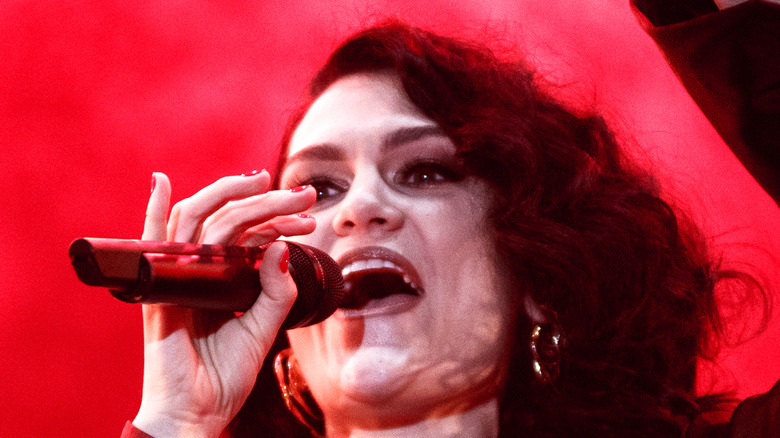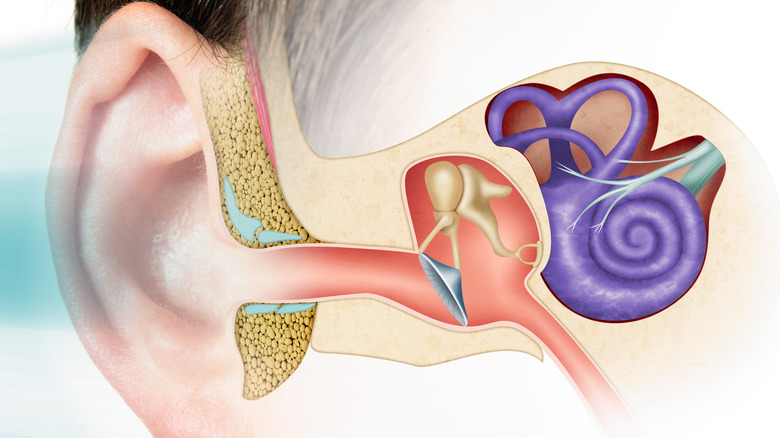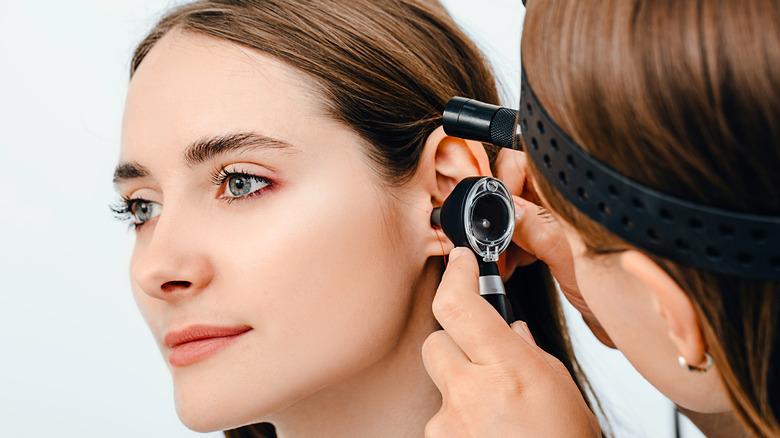Jessie J's Meniere's Disease Explained
There are few things as precious to a musician as their sense of hearing. It is absolutely possible to make beautiful music while hard of hearing. But most musicians are trained to rely on their hearing for their craft. So when that sense is muted it can be deeply painful.
Jessie J, born Jessica Ellen Cornish, knows this all too well. The English singer-songwriter has been performing for more than twenty years. She started at a performing arts school and then immersed herself in the world of music, starting with a West End production of "Whistle Down the Wind" at 11 and leading to a successful chart-topping career. Nearly her entire life has been about music.
Then, in December of 2020, that almost had to change. Jessie J woke up shortly before Christmas and couldn't hear out of her right ear. When she got out of bed, it was almost impossible for her to walk a straight line. According to People, the singer took to her Instagram Story shortly after to share her experience and the subsequent diagnosis of Ménière's disease.
Ménière's disease is defined by the Mayo Clinic as an inner ear condition that can cause temporary deafness, vertigo, and a sense of congestion in the affected ear. It is a chronic and recurring condition with symptoms that come and go, with little warning of when an episode is going to occur.
Understanding the inner ear
Despite what cartoons have led us all to believe, the inner ear is an incredibly complex series of small organs, connecting chambers, and delicately balanced pockets of fluid. And it is in these small pockets, chambers, and organs that the root of Ménière's disease can be found, according to the National Institute on Deafness and Other Communication Disorders.
The disease is specifically rooted in part of the inner ear called the labyrinth. The name might sound fanciful, but the region is absolutely vital to a person's sense of balance as well as their ability to hear. This is because the labyrinth houses the cochlea, the small seashell-shaped organ that allows us to process sound, as well as the smaller organs that control balance. These are known as the semicircular canals and the otolithic organs.
All of these are contained in the labyrinth which is made up of two parts. One is known as the bony labyrinth while the other is the membranous labyrinth. The bony labyrinth is, as one would expect, comprised of the bones in the inner ear. Inside the membranous labyrinth is a fluid called endolymph. Whenever we move, this fluid sends signals from the inner ear to the brain, creating our sense of balance.
The cause of symptoms
The symptoms of Ménière's disease all trace back to the fluid in the membranous labyrinth, endolymph. Nobody is quite sure what causes Ménière's disease to develop but as the Mayo Clinic explains, the general understanding is that this unknown trigger changes the amount or use of endolymph. Researchers aren't sure how and they're not entirely sure how much endolymph is a proper amount. But they know the fluid is behind the symptoms.
When symptoms occur, the endolymph in one ear puts pressure on the cochlea, damaging hearing in that ear and adding pressure to the rest of the labyrinth, which causes the congested feeling. This is something that Jessie J mentioned in her Instagram story. She coped with it by putting a finger in her ear while watching a movie shortly after her diagnosis, as reported by People. And while this is going on, the endolymph stops sending the right messages from the inner ear to the brain, resulting in vertigo.
There are several theories on what causes someone to develop Ménière's disease, according to the National Institute on Deafness and Other Communication Disorders. One theory suggests that the disease is caused by the same kind of constricted blood vessels that cause migraines. Another, based on the fact that Ménière's disease tends to run in families, states that it might be genetic. Others point to an autoimmune issue, viral infection, and even allergies.
Treatment options
As of today there are no definitive tests for Ménière's disease. Diagnosis is based on symptom clusters, according to the Mayo Clinic. Doctors may use blood tests and MRIs to rule out other causes. They may also use balance tests such as rotary chair testing, where patients sit in a chair that spins while a device monitors their eye movements. These can often help test vertigo even outside of an episode, but they are not conclusive. Generally if a patient presents with ear pressure, vertigo, and temporary hearing loss that come and go in episodes, doctors assume they are looking at Ménière's disease.
Just as there is no single test of the disease, there is also no cure. The National Institute on Deafness and Other Communication Disorders estimates that six out of ten people diagnosed with Ménière's disease recover either on their own or through the use of anti-vertigo drugs and a low salt diet that help reduce fluid pressure in the body. The remaining four out of ten often undergo surgery to relieve the pressure in their endolymphatic sac.
Ongoing research
Ménière's disease is not a well-understood disease, as is probably obvious. Both its root cause and the best treatment methods are wild cards that researchers are still looking into. The National Institute on Deafness and Other Communication Disorders reports that there are several ongoing areas of research, some of which could drastically change the treatment of the disease.
One area of research is the best medications and dosages to treat the condition without additional side effects. Other researchers are trying to determine just how much endolymph is normal, so they can determine if Ménière's disease causes an increase in the fluid, which will help narrow down research into the disease's root cause. Johns Hopkins Medicine also reports that some researchers think Ménière's disease could be a byproduct of migraines, providing another digging point into the origins of the condition
The most exciting area of research, however, is into the development of an assistive device called a programmable microfluid pump. This tiny pump would be the size of a computer microchip and could either redirect fluid away from the sensitive inner ear organs when pressure grew too great, or act as a draining system.
Moving on after diagnosis
A diagnosis is hardly what most people want for Christmas. Even less so when that person is a musician and the condition is Ménière's disease. But Jessie J put as positive a spin on it as she could. She urged fans to be thankful for their health and their loved ones during the holiday season, a message we can take to heart all year round.
Since her diagnosis, Jessie J has continued to make music and focus on her career. Her Instagram account is a testament to the passion she has for her work and the drive that keeps her moving in the face of adversity. Even in the face of new and ongoing health problems, she is continuing to chase her dream and build her career.
Jessie J has also been very public about the support she's received from others who share her diagnosis, a community that in America alone has about 615,000 people (via the NIDOCD), with 45,500 new cases diagnosed each year. The singer has said that their support eased her understanding of the disease and helped her with lifestyle changes that could help reduce her symptoms, all of which she thanked them for on social media to show her support in return.






